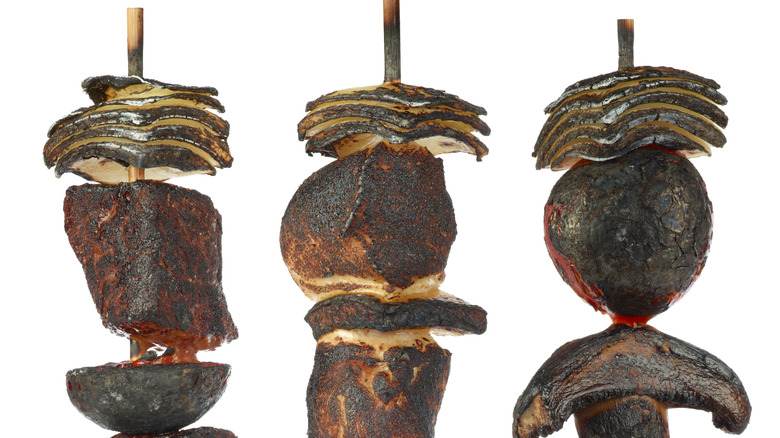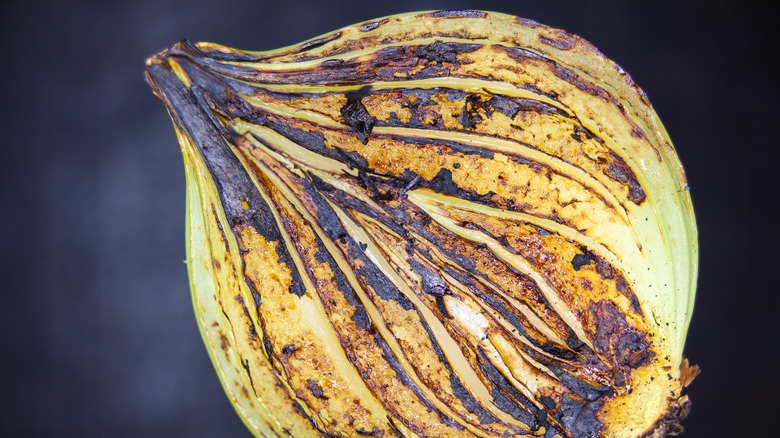Vegetables Burnt To Ash Are Unexpectedly A Culinary Masterpiece
Burnt vegetables are the worst. Or are they? You know the scene. You've spent time dicing and slicing vegetables and getting them onto a pan and into the oven. And now they're staring up at you, blackened, charred, burnt. Dinner may be ruined but hold off on dumping those veggies in the trash. Those roots and greens aren't ruined — they're the source of one very unique kitchen tool: vegetable ash.
That's right–blackened vegetables do have something to bring to the table and that's their charred remains. It sounds crazy but once crushed, those "ruined" veggies offer a unique way to bring flavor and character to both food and drink alike. Nobody likes the taste of food that's been cooked to a crisp, but vegetable ash isn't that. It offers notes of char over a flavor that is decidedly vegetal. Chefs have been incorporating it in unique ways for a while now, and it's super easy to do the same in your kitchen at home.
Vegetable ash is easy to make at home
Vegetable ash may sound like a new trend, but the truth is that using ash in food and cooking has a long history. Originating in France centuries ago, ash served a very specific purpose–pest control. Cheesemakers would cover their fresh cheese in a coating of ash from the fire in order to keep flies and bugs away. The original application may have relied from regular wood ash, but most used today is the vegetable variety. Ashy cheeses are still popular — Morbier from France is one of the oldest, but Humboldt Fog is a more contemporary example.
If you want to try your hand at vegetable ash at home, it's pretty simple. While any vegetable would work, there are some that work better–namely, onions. Onions and leeks are ideal candidates for vegetable ash because they char easily and also offer a particular earthy, umami note in the finished product.
Place your chosen vegetables on a pan and roast them under the broiler. Keep them under the direct heat, turning occasionally, for about an hour. Once the vegetables are good and charred, it's time to let them cool before grinding them up. Using a food processor, pulverize the charred vegetables until you have a fine, delicious powder.
Vegetable ash can be used in many ways
Vegetable ash is easy to make and maybe even easier to use. It offers a smoky, umami flavor that pairs well with creamy cheeses like chevre or brie, and it works well when mixed into a glaze for meats. Chef Thomas Hauck spoke to On Milwaukee about his vegetable ash, made with onion and leek, saying, "The ash had an earthiness that is hard to explain, not as bitter as you would assume. It was a great supporting element."
Combining vegetable ash with sea salt is another way to amplify flavor–the combo is a perfect seasoning for both meat and fish, and adds a little something extra to veggies, too. Ash isn't just for food, either. It provides an excellent addition to cocktails–use it to rim a glass in a mezcal cocktail to emphasize the smoke, or make a vegetable ash simple syrup to give depth to your next Old Fashioned. Burnt vegetables are no longer a failure, but an opportunity to elevate your next dish.


